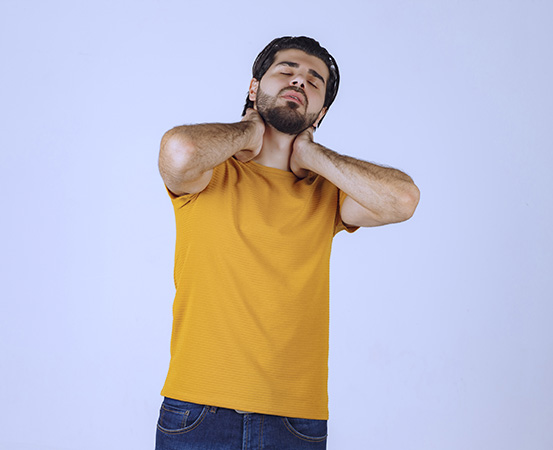
Headaches are similar to a jigsaw puzzle. Before popping a painkiller or applying a topical pain reliever to treat any headache, understanding how it originates along with its severity, nature (throbbing or a sharp and continuous pain) and frequency will help diagnose the type of headache. This helps to avoid misdiagnosis and administer the appropriate intervention without delay. One such type of headache that often gets misdiagnosed is cervicogenic headache.
What are cervicogenic headaches?
Cervicogenic headaches are those that arise from the cervical spine (neck region).
“Cervicogenic headaches cause pain on one side of the head, which usually occurs on the dominant side,” says Azmathulla Khan, physiotherapist, co-founder and consultant at Physiomatix, Bengaluru. “Tightness in the neck, overuse of the dominant arm and tendency to sleep on one side contribute to the development of cervicogenic headaches.”
The pain originates from the neck region. “The first, second and third cervical vertebrae are the source of the pain, which spreads towards all the muscles around the neck and then to the head,” says Dr Gurneet Sawhney, senior consultant, neuro and spine surgery, Fortis Hospital Mulund, Mumbai. “The C-1, C-2 and C-3 nerves are involved in causing the headache. When these nerves get irritated, the headache arises,” he adds.
The cervical vertebrae, para-spinal muscles and the first three cervical nerves (C-1, C-2, and C-3) play a major role in how and where the pain originates.
Causes of cervicogenic headaches
Cervicogenic headaches are a form of secondary headache (headaches caused due to an underlying medical condition that triggers pain-sensitive areas in the neck and head) that can develop due to several causes.
“A small cervical trauma, a simple jerk in the cervical spine or even a sudden turn that might cause the individual to strain the neck muscles while sleeping can give rise to a cervicogenic headache,” explains Dr Sawhney. “A whiplash [rapid back and forth movement of the neck] injury or sometimes even a large sneeze can be a cause.”
Sitting with a forward head posture for long periods (especially at the work desk) strains the neck muscles and can cause tech neck, which can later lead to cervicogenic headaches.
Symptoms and diagnosis
In most cases, any type of movement makes it worse, further restricting the range of motion of the head and neck.
“The pain, which is localised either on the right or the left side of the posterior neck region, starts radiating upward,” says Dr Sawhney. “Unlike migraines [which cause throbbing pain], the pain in case of a cervicogenic headache is severe and crushing.”
Cervicogenic headaches are diagnosed based on the symptoms.
“They only constitute about 20 per cent of total headaches and are usually misdiagnosed as migraines,” says Khan.
“Neck pain is an associated symptom of cervicogenic headache that can appear at any time of the day. In addition, stress and any movement of the neck can aggravate the pain,” adds Dr Sawhney.
Treatment of cervicogenic headaches
While getting rid of the pain is the priority, treating the underlying cause can prevent the recurrence of cervicogenic headaches.
“Cervicogenic headaches are common and are very much treatable and curable,” says Dr Sawhney. “Analgesics are usually given followed by cold fomentation at the neck region in case of a recent headache and hot fomentation in case of a long-standing one. Once the pain subsides, muscle relaxants can be given to reduce the muscle stiffness, after which one can start with physical therapy (interventions like manual therapy and therapeutic exercises) that helps increase strength in the neck muscles and eliminate the pain,” he adds.
“Physiotherapy helps in treating the cause of the pain, which could be postural issues or lifestyle problems,” explains Khan. “Releasing the tight muscles and strengthening the weak ones can help reverse the problem.”
In case physical therapy fails to provide relief, cervical blocks are used at the specific area to block the nerves. Surgical intervention is considered the last resort of treatment.
Takeaways
- Cervicogenic headaches originate due to irritation of the C-1, C-2 and C-3 nerves located in the cervical spine.
- Improper sitting posture (with the neck hunched forward), sudden jerking movement of the neck and whiplash injury are the major causes of cervicogenic headaches.
- In case of cervicogenic headaches, pain begins in the neck region and radiates upwards towards the head.
- Analgesics are usually prescribed to reduce the pain. In addition, treating the underlying cause through physiotherapy can prevent the recurrence of cervicogenic headaches.















